Sober living
now browsing by category
Understanding Cannabinoids and What They Do
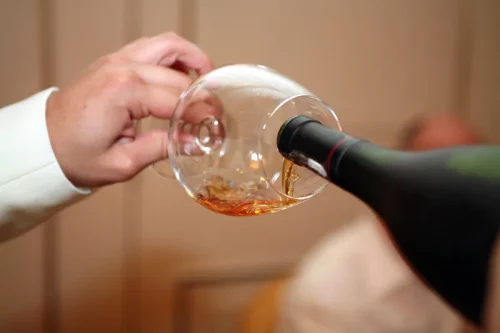
In other states, they are legal in some form for medicinal purposes. Look for a quality assurance stamp or certificate of analysis from a third party, or check the retailer’s website if you don’t see one on the product’s label. THC can cause a sense of euphoria but can also cause other sensations, like paranoia. CBD oil should not contain more than 0.3% THC, so it does not typically cause a feeling of euphoria—so many people assume it’s safe, although it may not be, especially for specific populations.
- Depending on the cannabinoid, they can make us hungry, sleepy, forgetful or euphoric (or any combination of these and more).
- A prescription cannabidiol (CBD) oil is considered an effective anti-seizure medication.
- If you’re searching for a high-quality medical cannabis strain that places the emphasis on cannabidiol, these six strains are an excellent place to start.
- CBD is thought to mimic naturally occurring cell-signaling molecules in the body known as endocannabinoids, or endogenous cannabinoids.
- Now leading experts at Harvard Medical School are here to help you separate fact from frightening fiction about medical cannabis so you can make informed decisions.
- NuLeaf Naturals and Bluebird Botanicals are two examples of brands that sell CBD products that undergo testing by accredited third-party laboratories and offer batch reports on their websites.
Is There Any Proof CBD Works?

This is a really unique and little-understood mechanism covered under the entourage effect. But if you take a close look at dispensary products, you’ll see plenty of strains, edibles, and concentrates that include a healthy dose of CBD in addition to high quantities of THC. The topic of treating stress and anxiety sets us up perfectly to pivot to the importance of cannabidiol for recreational marijuana users. Specifically, cannabidiol binds with the endocannabinoid system to produce a response that reduces nerve inflammation.
- One is that CBD can interact with many different medications, including everything from blood thinners to over-the-counter pain relievers like ibuprofen.
- “To get a therapeutic benefit, particularly for seizures or acute pain, it appears you probably need to take around 10 to 20 milligrams per kilogram, so roughly a gram of cannabidiol per day.”
- The United States Food & Drug Administration (FDA) has not approved the cannabis plant itself for medical use.
- CBD is typically considered safe, but additional research is needed to fully understand its risks and potential side effects, according to the FDA.
- Some drugs can affect your blood levels of other drugs you take, which may increase side effects or make the medications less effective.
- As with many supplements, there are potential risks you might experience while using it.
How can CBD be taken?
People make CBD oil by extracting it from the cannabis plant and diluting it with a carrier oil like coconut oil or hemp seed oil. It’s one of more than 100 chemical compounds called cannabinoids that are found in the cannabis plant, Cannabis sativa. Cannabidiol oil, or CBD oil derived from cannabis, is a popular natural remedy for many ailments. CBD oil benefits include pain relief and relaxation without any mind-altering effects.
- One 2019 review found that CBD might help slow the onset and progress of Alzheimer’s disease.
- You can find her floating around the Pacific Northwest’s funky cafés and observing the locale from behind her MacBook.
- We need more research, but CBD is proving to be a helpful, relatively non-toxic option for managing anxiety, insomnia, and chronic pain.
- OTC CBD products are not regulated or standardized like prescription drugs in the United States.
Cannabidiol is Not Psychoactive
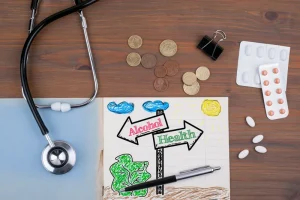
However, this was an observational study without the necessary elements of a clinical trial that can drive conclusions such as blinding, randomization, and placebo control. People interested in CBD should research manufacturer claims and discuss potential drug interactions with a doctor. According to preclinical evidence from studies, CBD may benefit pain and inflammation related to arthritis, but human studies are lacking. Though CBD may improve certain cancer-related symptoms in some people, research findings are currently mixed.
The European Chemicals Agency (ECHA) first published France’s intention to introduce a harmonized classification and labeling (CLH) for cannabidiol last year. CBD could be deemed toxic for reproduction, which could then lead to its prohibition in cosmetic products across Europe. That is if a process launched by France last year comes to an end. Epidiolex can be used in people 2 years of age and older to reduce the frequency of seizures in those with either condition. While CBD and CBN work similarly, CBD has been more widely studied. More research is needed to better understand the therapeutic potential of CBN.

For quick relief of acute stress and anxiety, consider vaporizing high-CBD strains that also contain an array of botanical compounds—or try a clean, lab-tested CBD oil. is cannabidiol addictive Ingesting CBD oil may also help alleviate anxiety on the fly, but the effects are not instantaneous. CBD (cannabidiol) is a therapeutic compound produced by cannabis.
Supporting mental health
Most of these studies have focused on animal participants, and further research is needed. Experts recommend awareness around these potential side effects when prescribing cannabis to patients who are of reproductive age. If you are taking other medications, CBD can impact their efficacy, and the dose you are taking may need to be re-evaluated by your doctor. CBD can potentially interact with other medications to cause side effects. During drug trials for Epidiolex, the FDA determined liver injury to be a side effect of CBD.
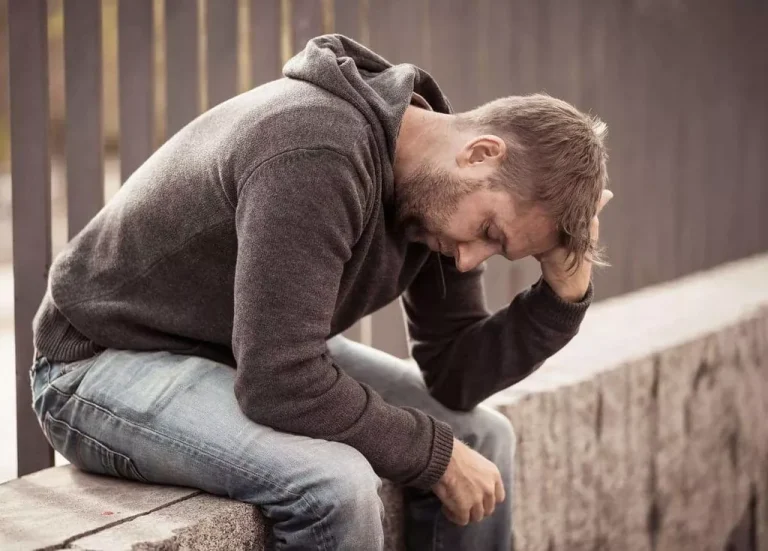
Is CBD safe?

Alcoholism symptoms: what are the signs of alcohol abuse?

This pattern can cause significant health risks and social problems, even if it’s not a daily occurrence. Alcoholism is often misunderstood as a condition where individuals consume alcohol every day. This misconception oversimplifies a complex disorder and can prevent people from recognizing problematic drinking patterns in themselves or others.
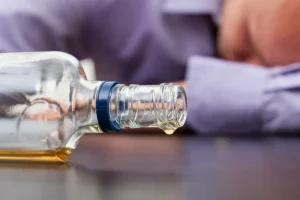
What are the Symptoms of Alcohol Use Disorder (AUD)?
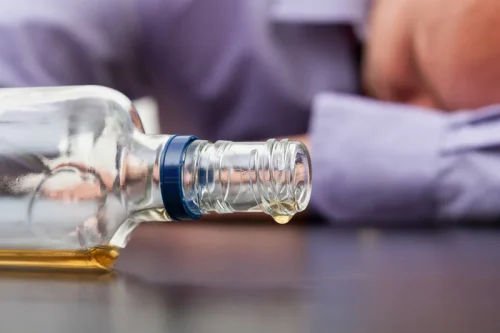
Alcohol cravings are intense urges to drink that can be triggered by various factors, including stress, environmental cues, or emotional states. These cravings can be overwhelming and difficult to resist, leading to a constant preoccupation with obtaining and consuming alcohol. Withdrawal symptoms occur when https://ecosoberhouse.com/ a person who regularly consumes alcohol suddenly stops or significantly reduces their intake. These symptoms can range from mild to severe and potentially life-threatening.
- An alcoholic is someone who is physically and mentally dependent on alcohol.
- Alcohol use disorder has been identified as something that happens when a person drinks so much or so often that it changes the chemical makeup of their brain.
- Alcohol masks unhappy emotions, so those feelings may come back when you quit drinking, making it harder to stick to your goal.
What can happen to your liver if you drink too much alcohol?
Treatment programs and online alcohol rehab are available if you are facing an alcohol problem.
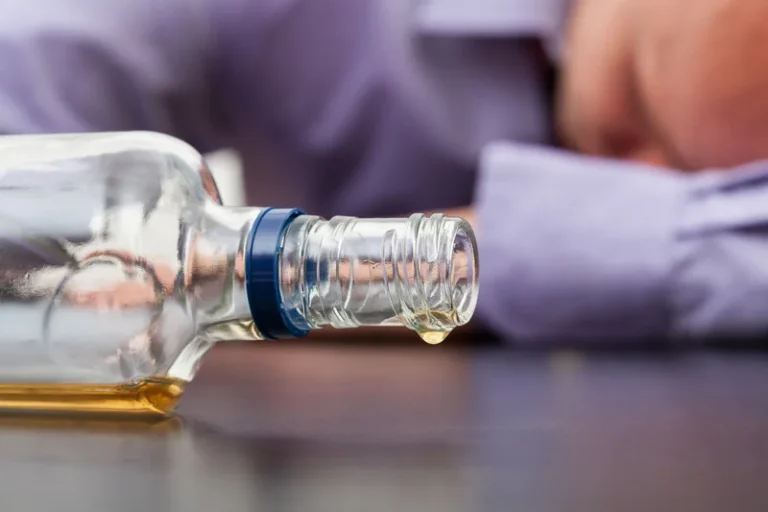
Early Stage
Drinking is seen as an outlet to reduce social jitters and demonstrate confidence among their peers. Twenty-four percent (67.1 million people) binge drank in the past month, meaning that they consumed five or more drinks on at least one occasion. A little over 6 percent (16.6 million people) drank heavily or binge drank on at least five occasions in the last month. Primary care physicians are well-equipped to assess your overall health and identify any alcohol-related medical issues. Alcohol use disorder exists on a spectrum, ranging from mild to severe. The Diagnostic and Statistical Manual of Mental Disorders (DSM-5) outlines 11 criteria for AUD, with the presence of just 2-3 symptoms indicating a mild disorder.
How do you know if you have AUD?
- In mild alcoholic hepatitis, liver damage occurs slowly over the course of many years.
- Although there are many warning signs for alcoholism, some can be hard to identify.
- Call a treatment provider to find alcohol treatment facilities nearby.
- According to the Centers for Disease Control and Prevention (CDC), moderate drinking is typically defined as two drinks or fewer for men per day, or one drink or less for women.
- This doesn’t make you a bad person, but it does make it more urgent that you look for help to change your habits and get your relationships back on track.
Tracking your alcohol intake is the first step in understanding your drinking habits. To do this effectively, you need to keep a detailed drinking diary for at least one week. This will give you a clear picture of your consumption patterns. To speak with a representative about treatment options, reach out to the helpful team at The Recovery Village today. Even if you recognize many of these health factors and warning signs in your own life, it is not too late to reach out for support and treatment. Often there is a genetic predisposition that increases the odds of an individual having alcohol use disorder, as well as psychological and environmental factors.
Reasons for Drinking
This stage of alcoholism is difficult to notice, even for the person misusing alcohol. It can be hard to signs of alcoholism see there is a problem even if the drinking is negatively impacting your health and your life. Signs include slurred speech, uncoordinated movements, lowered inhibitions, and the smell of alcohol on the breath.

Mastering Relapse Prevention Planning: Your Guide to Sustained Recovery
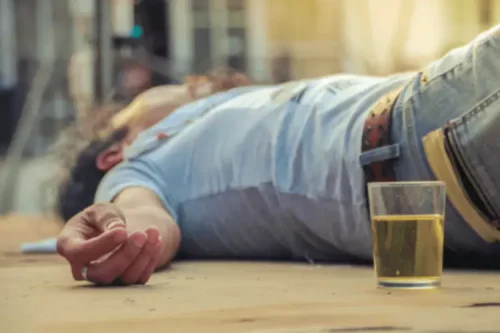
With more effective coping, the patient develops increased confidence to handle challenging situations without alcohol and other drugs (i.e., increased self-efficacy). This may vary from person to person and be influenced by things such as extent and length of use. Talking openly about a lapse or relapse with a care team can help you develop and strengthen your relapse prevention plan and identify how to get back on track with your recovery goals.
What are some effective relapse prevention strategies?
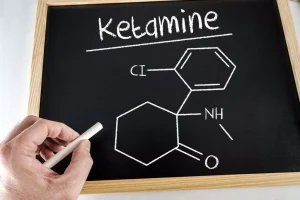
This environment of compassion and empathy is the bedrock for open, constructive communication. It is here that the foundation of unconditional support is laid, ensuring that the recovery process is met with patience and understanding rather than power struggles. By taking the time to understand what happened, individuals can learn from the experience and develop strategies to prevent future relapses.
Support for Me and My Family
- After gaining insight into the factors contributing to relapse, it’s essential to adjust your relapse prevention plan accordingly.
- To gain an in-depth understanding of interventions, tools, and resources available focused on maintaining recovery and preventing relapse for patients with anxiety and/or depression symptoms following guided self-help (GSH).
- Cognitive-behavioral therapy entails examining life experiences and thought patterns, and reshaping one’s thinking positively rather than succumbing to negative self-talk.
- However, when examining those with PTSD, the prevalence of SUD escalates to as high as 35 percent, while alcohol use disorder (AUD) stands at 52 percent.
Substance abuse and mental health expert Terry Gorski has a nine-step relapse prevention plan that can help you recognize and manage relapse warning signs. Alan Marlatt, PhD, developed an approach that uses mental, behavioral, and lifestyle choices to prevent relapse. A relapse prevention plan plays a vital role in mitigating the risk of relapse and supporting individuals in maintaining their recovery goals. These relapse prevention skills skills encompass a range of strategies, from self-awareness and coping mechanisms to building a robust support network and implementing healthy routines. Structured therapies have combined Relapse Prevention (RP) in a group format with individual sessions of motivational interviewing in adolescents with cannabis use disorder (motivational enhancement therapy and cognitive behavioral therapy, or MET/CBT).
What Are The Three Stages of Relapse?
- Some practitioners delivering low-intensity treatment may discuss relapse prevention throughout the course of treatment to ensure sufficient time is provided to any relapse prevention work (Papworth & Marrinan, 2018).
- Continued brief support after treatment – A follow-up was also an integral feature for relapse prevention as this component was included in five of six relapse prevention tools and interventions.
- A scoping review does not seek to assess the quality of the evidence (Arksey & O’Malley, 2005; Pham et al., 2014) but rather provide an overview of all existing evidence related to a certain topic (Tricco et al., 2016).
- By making positive daily choices, you reinforce your commitment to change and reduce the likelihood of emotional relapse.
Your relapse prevention plan can detail how you will connect with loved ones who supported you through the treatment process. Try your best to plan regular get-togethers with friends and family, as avoiding isolation and bolstering these relationships can make recovery easier. Addiction recovery is a journey that extends beyond initial treatment, involving continuous commitment and proactive planning. Relapse prevention planning helps maintain long-term recovery by identifying potential triggers and creating actionable responses. This approach strengthens recovery for substance use disorders, behavioral addictions, mental health concerns, and other conditions. Providers have long recognized that relapse is a process rather than an event.
Continuously investing in your recovery will help you stay focused and motivated. Also, setting boundaries allows individuals to say no to situations or people that may trigger cravings or jeopardize their progress toward sobriety. It empowers them to prioritize self-care and prioritize their own needs, even if it means distancing themselves from certain people or situations.

Distraction Ideas for Cravings
- With repeated use, alterations in brain chemistry and functioning can result in the development of substance dependence.
- Lastly, even in the absence of explicit consequences for alcohol or drug use, knowing they may be subject to testing provides a measure of deterrence against relapses for some individuals.
- It’s a poignant moment when someone who has worked tirelessly to break free from addiction finds themselves slipping back into old patterns of behavior and substance use.
- The effort to choose your health and well-being every day is a great feat, so continue to reflect and pride yourself on your hard work.
- Anything that helps us healthfully manage and process our emotions is a great inclusion in a relapse prevention plan.
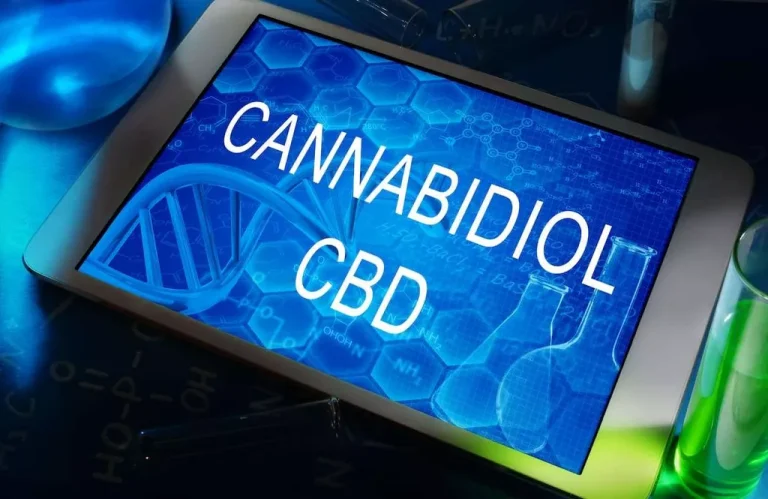
How Common Is Relapse?


Allergic to Alcohol? 10 Common Symptoms of Alcohol Intolerance
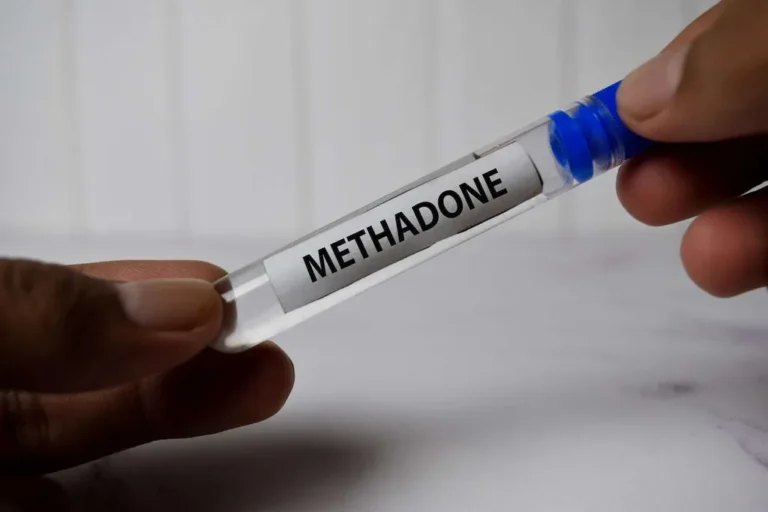
Others think that the light source stimulates your optic nerve, which in turn stimulates your trigeminal nerve and causes you to sneeze. This reflex is why so many people sneeze when they look at the sun. For example, if a bacterial infection causes sneezing, a provider may prescribe antibiotics.
Products & Services

If the allergic reaction is more severe, people may require epinephrine, also known as an EpiPen. A person with severe allergies should carry one with them at all times, in case of a serious allergic reaction. Depending on whether a person has an alcohol allergy or intolerance, they may need to avoid alcohol entirely.
Can I prevent sneezing after eating?
You can also get allergy testing to check whether you have a true allergy to alcohol. Allergy testing can also tell you if you have an allergy to another component of alcoholic beverages like wheat, grapes, or barley. It’s possible to be allergic to alcohol, but it’s not very sneezing when drinking common. Most people who think they have an alcohol allergy actually have an alcohol intolerance (also called acute alcohol sensitivity). If you’ve ever had an alcoholic drink only to find your nose running and your stomach roiling, you may have an alcohol intolerance.
- People may also have an allergic reaction to specific ingredients in alcoholic drinks rather than the alcohol itself.
- Black pepper acts as a chemical irritant on the nerves in the nasal mucosa, which causes sneezing.
- You can also manage the symptoms of gustatory rhinitis with over-the-counter decongestants, such as pseudoephedrine (Sudafed).
- This may help clear the irritant triggering the sneeze, although this technique is not scientifically established.
- Snatiation is likely genetic and doesn’t cause any health problems.
- In the rare case of intractable sneezing, scientists understand its most common cause to be psychological in nature.
Alcohol intolerance
You may have heard that some people with food allergies are slowly given increasing amounts of allergen orally in order to promote tolerance. Further study found that the reaction was due to insect venom allergens present in the wine. Intolerance is a condition where your body can’t break down alcohol effectively, which may be genetic or develop over time. It’s important to distinguish between a wine allergy and alcohol intolerance. This article explains why some people sneeze after eating, its causes, and tips to prevent it.

Red wine tends to have higher levels of histamine than white wine or beer. With medical big data and proven AI algorithms, eHealthMe provides a platform for everyone to run phase IV clinical trials. Results of our real-world drug study have been referenced on 700+ peer-reviewed medical publications, including The Lancet, Mayo Clinic Proceedings, and Nature. Our analysis results are available to researchers, health care professionals, patients (testimonials), and software developers (open API). It is based on alcohol (the active ingredients of Alcohol) and Alcohol (the brand name).
- Finally, I’ll explain when to talk to a medical provider about sneezing.
- Intractable sneezing is an uncommon condition in which an individual sneezes a lot, and the sneezing does not get better with standard lines of treatment.
- It’s responsible for scalp and facial sensations and motor functions like chewing and swallowing.
- To get to the bottom of what’s causing you to sneeze, keep track of when and what you eat to see if you can find any patterns.
If you have a known allergy, try to avoid exposing yourself to it before you start to sneeze. This is why it’s important to isolate when you’re sneezing and have confirmed or suspected case of COVID-19. These environmental triggers can vary seasonally in their prevalence and intensity, especially in the case of outdoor allergens like pollen.
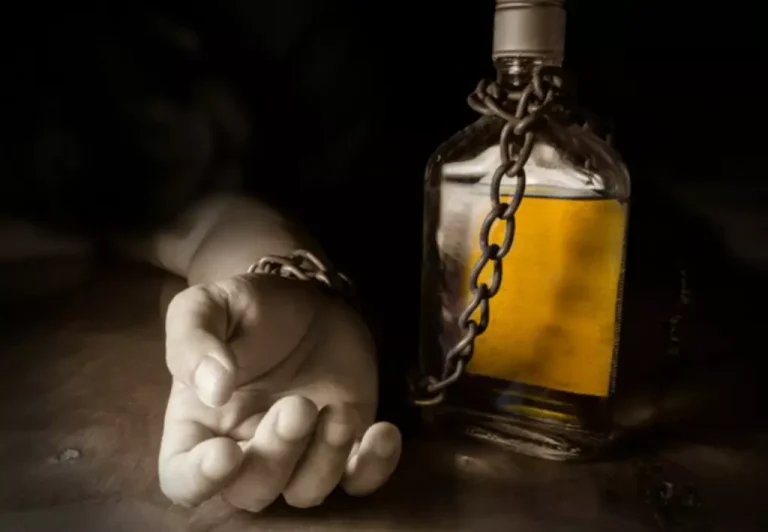
Reactions of redness or swelling will often occur quickly if you’re allergic to the allergen. Sometimes, insects, such as bees and wasps, can fall into wine and be crushed with the grapes. In fact, one study of five individuals found that a reaction was observed after drinking newly processed wine or grape juice. Although no fining agents were detected in the wines, a very small skin reaction was observed in people with a milk, egg, or fish allergy. Due to the small scale of the response, the researchers concluded fining agents pose a very low risk.

Can You Mix Benzodiazepines Like Xanax With Alcohol?
- Sneezing from chemical and physical irritants is not due to the release of histamine, so most antihistamines would not be expected to help in these cases either.
- With an alcohol allergy, a person’s immune system overreacts to alcohol.
- Your stomach then digests the mucus, which neutralizes any potentially harmful invaders.
- One anecdotal theory is that saying a funny or unusual word out loud just before sneezing can stop the sneeze from occurring.
Alcohol can behave differently in people of different gender and age, or after taking with other drugs. With medical big data and AI/ML algorithms, eHealthMe runs millions of phase IV clinical trials to monitor drug outcomes in the real world. Our original studies have been referenced on 700+ peer-reviewed medical publications including The Lancet, Mayo Clinic Proceedings, and Nature. Check your drugs now, it’s personalized to your gender and age. It is best for people who have gluten intolerance to avoid beer, unless it is gluten-free.
High blood pressure
Is Your Loved One Showing Early Signs of Alcoholism? Kingsway Recovery
Content
This class of drugs is commonly prescribed to alcoholics for insomnia or anxiety management. Those who are long-term users of benzodiazepines should not be withdrawn rapidly, as severe anxiety and panic may develop, which are known risk factors for alcohol use disorder relapse. Taper regimes of 6–12 months have been found to be the most successful, with reduced intensity of withdrawal.
- Even if you feel like you’ve sobered up, you may still have alcohol in your system that can affect your reaction time.
- When individuals have an alcohol use disorder, they will most likely experience the following symptoms of psychological effects, as well as physical dependence.
- A total of 3.3 million deaths (5.9% of all deaths) are believed to be due to alcohol.
- This will ensure you maintain your sobriety and allow you to meet other peers who have overcome alcohol abuse.
- It’s a disease of brain function and requires medical and psychological treatments to control it.
- People experiencing this phenomenon might even switch up their drink of choice — moving from beer or wine to hard liquor, for example, to accommodate their need for more alcohol.
Alcohol abuse changes and damages many areas of the brain, such as the dopamine receptors (or feel-good chemicals). It can cause damage to such an extent that the children of an alcoholic are more likely to suffer from alcoholism. Inheriting a likelihood to become an alcoholic from a parent decreases with each generation. This shows how harmful the irreversible effects of alcohol addiction are. People with long-standing alcoholism may be able to have several drinks before appearing intoxicated. If left untreated, alcohol abuse can spiral out of control quickly.
What is alcohol use disorder?
Meanwhile, binge drinking focuses more on how quickly and how much you drink in one sitting. The CDC defines binge drinking as drinking that brings your blood alcohol concentration to 0.08% or more. This is usually achieved if you consume five or more standard drinks on a single occasion for men or four or more drinks on a single occasion for women.
While there is no single factor that can ultimately determine your risk for developing a substance abuse concern, there are certain things that may put you at increased risk for developing a drinking problem. Alcohol addiction has been linked to many causes, including genetic factors, environmental influences, and untreated mental illness. Rationing and moderation programs such as Moderation Management and DrinkWise do not mandate complete abstinence. While most people with alcohol use disorders are unable to limit their drinking in this way, some return to moderate drinking.
Alcohol Use Disorder Statistics
Pancreatitis can activate the release of pancreatic digestive enzymes and cause abdominal pain. Here’s a breakdown of alcohol’s effects on your https://ecosoberhouse.com/ internal organs and body processes. A typical 25-ounce bottle of table wine holds about 5 “standard” drinks, each containing about 5 ounces.
- After a month or two of excessive drinking, MCV levels rise.
- Evidence supports a reduced risk of relapse among alcohol-dependent persons and a decrease in excessive drinking.
- She is passionate about helping people who are struggling with alcohol abuse and addiction and hopes her writing for Alcohol Rehab Guide can help.
Heavy drinking can damage your pancreas or lead to inflammation of the pancreas . People with a history of emotional trauma or other trauma are at increased risk of alcohol use disorder. The risk alcoholism of alcohol use disorder is higher for people who have a parent or other close relative who has problems with alcohol. Several tools may be used to detect a loss of control of alcohol use.
How does alcohol addiction affect the brain?
Alcoholic jaundice is usually found in the progressive, final stages of liver disease. Hence, seeking professional medical advice is crucial if you notice such symptoms. Drinking too much alcohol may lead to a tingling sensation or numbness in your legs, feet, or hands, known as alcoholic neuropathy.
15 Common Misconceptions About Addiction
Content
Also, people who’ve struggled with addiction often enter rehab with gaps in employment and other financial hardships. They may also be homeless, facing eviction, or locked into an abusive relationship. Still, a significant percentage of people who enter rehab will also have a co-occurring illness that may have never been addressed and treated. Rehab gives patients access to a team of experienced medical professionals and therapists who can manage the multitude of complex issues that addiction patients often face. “Rock bottom” varies from person to person but it is not a prerequisite for seeking treatment.
However, addiction is a disease and can make someone so hyper-focused on getting their next fix that it’s nearly impossible for them to think about anything else. When people picture an addict, they picture a perpetuated stereotype of a disgraceful person with no goals in life. The reality is that many people who suffer from addiction function well in society and may even be highly successful. It is simply harder to tell that person is struggling, which makes it harder for friends and family to notice changes enough to intervene.
Contact Windward Way Recovery
Unfortunately, prescription drugs can be incredibly harmful if a person takes them without a prescription. Even taking a drug as prescribed can have potentially devastating side effects. Just because a drug is legal and prescribed by a physician does not mean it is 100% safe.
Relapse doesn’t mean that treatment has failed or that sobriety is a lost cause. It is a signal to get back on track, either by going back to treatment or adjusting the treatment approach. One important thing for people struggling with addiction to remember https://ecosoberhouse.com/ is that they are not alone. From their friends and family to members of support groups, there are plenty of people who care about them and can help them along the way. Medically Assisted Therapy may utilize prescription drugs like methadone and suboxone.
Terms & Conditions
Many people view relapse as a sign of failure and may become disappointed with themselves or their loved one. However, as disappointing as it may be, it is still possible to get back on the right track. In fact, according to the US National Institute on Drug Abuse, percent of people who receive addiction treatment relapse at some point afterward. Your risk of relapse can increase based on different factors including cravings, poor mental health, a stressful life event, encountering a trigger, and more.
Butch Glover, a state licensed and nationally certified addiction counselor, accepted his role as Chief Operations Officer in 2015. Cinde regularly trains on topics ranging from 12-step based Dialectical Behavior Therapy and Spiritual Care principles to ethical practice and clinical supervision. Her core belief is that love is more powerful than myths about addiction and recovery the wounds we have experienced, and, in fact, can cause us to become our strongest at those places. Your gift to Cumberland Heights through our annual and capital initiates gives immediate support to patients and their families. To make a longer term impact a gift to the endowment fund will provide patient assistance funding for years to come.
Guide to Sober Homes, Transitional Housing & Halfway Houses FHE Health
This may include finding and maintaining employment, attending school, or participating in volunteer activities. Halfway houses typically have rules and expectations in place http://www.mirea.org/tema/28-zabavnoe-v-seti/page-20 to help residents maintain their sobriety and build healthy habits. These may include curfews, regular house meetings, and mandatory participation in recovery activities.
Pros and Cons of Halfway Houses
- Halfway houses offer a dorm-like setting, while sober homes are in quiet residential areas and focus more on independent living.
- In several halfway houses, visitors can have video visits with the residents using their own mobile devices or computers.
- We often find ourselves at a crossroads where decisions must be made—decisions that could alter our paths forever.
- Owner Genc Salihu says she’s part of the family, and people turn up just to see and pet Lule.
- In the most recent survey, 83% of Republicans say protecting gun rights is more important, while 79% of Democrats prioritize controlling gun ownership.
Although halfway houses share a lot in common with sober-living homes, there are a few key differences that set them apart. Halfway houses serve as the halfway point between an institution and independent society, with residents usually coming from either correctional or inpatient treatment facilities. Rules, guidelines, and what to expect at a halfway out are now more precise than before. https://ffforever.info/index.cgi?act=Profile;CODE=03;MID=70-1163756393 These living homes aren’t just places for recovery—they’re stepping stones back into society. Violence prohibition means that acts of aggression towards other residents will not be tolerated under any circumstances—again, with possible expulsion being a consequence. Call us now if you have questions about what halfway houses offer or if someone close needs help transitioning into one.
Transitional Housing and Sober Living in New York, NY: Find a Safe Place to Live and Recover
But it should be noted that regular monitoring, auditing, and data reporting should be the norm in the first place. Halfway houses are just as much a part of someone’s prison sentence as incarceration itself, but they are subject to much less scrutiny than prisons and jails. This lack of guidelines and oversight has ensured that people in halfway houses are not being aided in safely and effectively rebuilding their lives after serving time in jails and prisons. People who are working through recovery often enter residential programs for intensive care. However, walking back into the same life — the same home, surrounded by the same people and often in the same high-risk environment — is never ideal. Those who lack a stable, drug-free and alcohol-free living environment are at high risk of relapsing.

Family and Children’s Programs
- Halfway houses are dorm-style living spaces owned by a government or private agency.
- While it’s natural to struggle a bit when first tasked with a new set of responsibilities, residents may ask for help from their peers if they cannot complete the cleaning tasks by themselves.
- A study published in the Journal of Psychoactive Drugs by the Alcohol Research Group Public Health Institute showcased the importance of social and environmental factors in recovery.
- The amount of time you’ll stay at a halfway house varies, but most stays are between three to twelve months.
- Your recovery doesn’t end once you leave a halfway house; instead, it’s more akin to graduating from one level to another – each requiring unique tools and strategies for success.
By offering a supportive and substance-free environment, halfway houses provide a crucial buffer between the structure of a rehab center and the challenges of living independently. This transitional period allows you to continue building upon the skills and habits you developed during treatment, while gradually adjusting to increased levels http://electric-alipapa.ru/infusions/shoutbox_panel/shoutbox_archive.php?rowstart=740 of personal responsibility and freedom. Research shows that individuals who participate in sober living programs after completing treatment have significantly lower relapse rates than those who do not. These official transitional housing locations serve over 10,000 offenders recovering from drug abuse and working on their mental health.
- The term halfway house can refer to a number of transitional living environments that help people re-enter society.
- In some cases, residents may be denied access to certain privileges, such as phone calls to a loved one.
- While regular population reports are not available, 32,760 individuals spent time in federal RRCs in 2015, pointing to the frequent population turnover within these facilities.
- Pew Research Center conducted this analysis to summarize key facts about Americans’ relationships with guns.
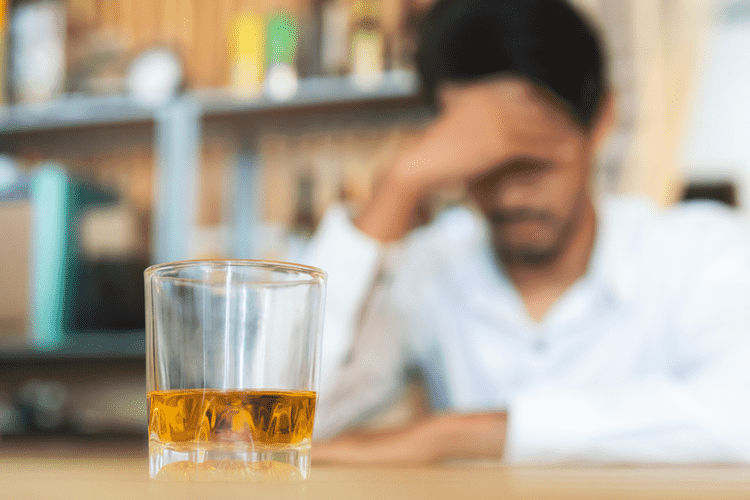
How Long Alcohol Stays In Your System: Urine, Saliva & Blood
Your liver metabolises and eliminates 95% of the alcohol you consume. The liver breaks down most consumed alcohol, eliminating 95% of it from the body. Two enzymes do most of this work, and the most important is Alcohol Dehydrogenase (ADH). There are a few simple, natural methods that you can try to help you reduce hangover symptoms and regain alertness. These methods will not help your body to process alcohol any quicker and you will still remain intoxicated and impaired.

Type of Alcoholic Beverage Consumed
Urinate after sex to flush away bacteria that may have entered the urethra during sex. If you’re a woman, wipe from front to back, especially after a bowel movement, to keep bacteria from getting into the urethra. Often, people will hold their urine because it’s not a good time to go to the bathroom.
Thinking of Stopping Drinking? 9 Tips to Succeed

If you drink more than one standard drink per hour, the remaining alcohol will accumulate in your system. As a result, your BAC will increase how to flush alcohol out of your system as you consume more drinks. Eating before drinking affects how quickly you’ll get drunk and whether you will feel sick after drinking.
How to Flush Out Alcohol After a Couple of Drinks
With sleep deprivation, your body does not have time to perform those functions, so toxins can build up and affect several aspects of health (15). Excessive drinking can severely damage your liver function by causing fat buildup, inflammation, and scarring (9). The term toxin can refer to pollutants, synthetic chemicals, heavy metals, and processed foods, which can negatively affect health. Alcohol metabolizes rather quickly; thus, a saliva test or breathalyzer test is used to confirm intoxication or recent drinking. These tests are used by emergency departments, police officers, and sometimes in rehab centers to ensure outpatient treatment participants are practicing abstinence.
- If you’re a woman, wipe from front to back, especially after a bowel movement, to keep bacteria from getting into the urethra.
- Experiencing withdrawal when you stop drinking indicates a dependence on alcohol, and it may be difficult to quit drinking on your own.
- Research has shown that alcohol use disorder, or alcoholism, tends to run in families, suggesting a genetic link.
- With prebiotics, your good bacteria can produce nutrients called short-chain fatty acids that are beneficial for health (41, 42).
A hollow, muscular, balloon-shaped organ that expands as it fills with urine. Although you do not control how your kidneys function, you can control when to empty your bladder. The urinary tract includes two kidneys, two ureters, a bladder, and a urethra. One problem is there’s little scientific evidence regarding alcohol use with antibiotics. The recommendations are open to interpretation (often based on personal experience, observation and general knowledge of how alcohol and antibiotics act in the body). Healthcare providers write over 200 million antibiotic prescriptions every year, according to the U.S.

You will breathe easier and sweat profusely, releasing toxins naturally. This will help make the flushing out of urine and, essentially, the alcohol in your system. Alcohol causes dehydration, which is why you get a hangover the next day after a night of drinking. Drinking plenty of water will reduce dehydration and get water back in your system.
to 48 hours
You can, however, take tips and suggestions on how you can make the experience a little easier. The acetaldehyde produced is not enough if you experience reddening and flushing in the neck or face area. Your liver breaks down the alcohol and turns it into the highly toxic and reactive chemical acetaldehyde. Ninety percent of the time, the alcohol goes through the liver, and only around 10% of it gets out through sweat and urine.
The Timeline of Alcohol Withdrawal
If you have been drinking heavily, alcohol can continue to show up in your urine for up to 72 hours or more. Mindful drinking is about being aware of why and how much alcohol you consume. It involves paying attention to the taste and your body’s signals, helping you enjoy a few drinks without overindulging. Your body processes alcohol through your liver, breaking it down into simpler substances that can be easily eliminated.
- Additionally, drinking herbal teas, such as dandelion root tea, milk thistle tea, and burdock root tea, can help the body rid itself of alcohol more quickly.
- However, this requires you to improve the efficiency of your aerobic system.
- If you’re a social drinker or only consume large amounts of alcohol every now and then, it shouldn’t be too hard to clean out your system.
- This can occur as a result of increased lactate production or decreased lactate clearance.
Drinking alcohol, specifically within 4 hours before you go to bed, may help you fall asleep quicker but ultimately reduce your REM sleep and will potentially wake you up later. Timing your cocktails or swapping out your drink for a mocktail is a great way to ensure you’ll sleep soundly through the night. Alcohol consumption decreases melatonin production — regardless of whether the sun is down.
